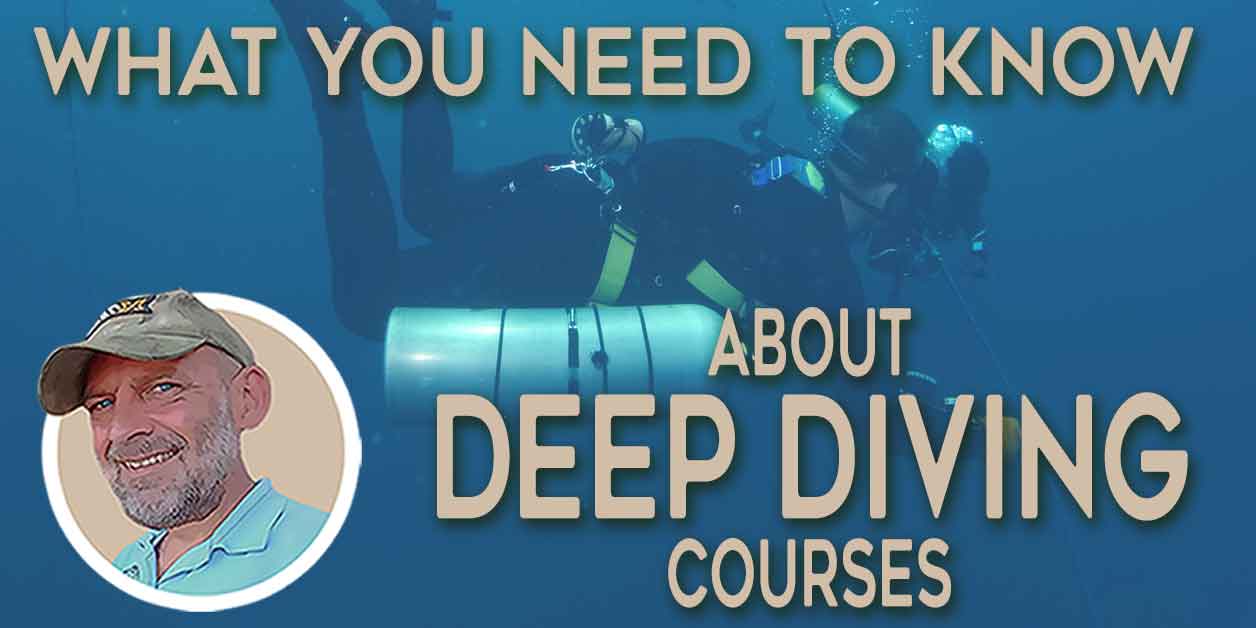What is Fluorescence Night Diving? A Guide to Fluo Diving and Glow Diving.
Fluorescence night diving, often referred to as “fluo diving” or “glow diving,” has gained popularity in recent years among diving enthusiasts.
This unique underwater experience combines the beauty of night diving with the mesmerizing effects of fluorescence.
In this article, we’ll explore what fluo diving is, how it works, and where you can embark on this extraordinary adventure.
The Magic of Fluorescence
Fluorescence is a captivating phenomenon that occurs when certain materials, like coral tissue, absorb high-energy light and then re-emit it at a longer wavelength.
In simple terms, this means that some objects can glow in astonishing colors when exposed to the right type of light. This enchanting effect has drawn the attention of divers, leading to the emergence of fluo diving.
Why Does Fluorescence Occur?
Fluorescence is a physical effect exhibited by specific materials when they absorb high-energy, short-wavelength light and re-emit it as lower-energy, longer-wavelength light.
This phenomenon is not limited to living organisms; it also occurs in minerals. “Fluorite” or “fluorspar” is a mineral that generates thermoluminescence when heated, creating the glow-in-the-dark effect that inspired the name “fluorescence”.
It’s important to note that fluorescence should not be confused with phosphorescence, which involves the storage and gradual re-emission of light over a longer period.
What is Fluo Diving and How Does It Work?
Fluo diving is a captivating variation of night diving that reveals the hidden beauty of the underwater world through the use of specialized underwater torches that emit fluorescent light.
Under normal sunlight, the colors of tropical corals and marine life are already stunning. However, fluorescence diving unveils a hidden secret beneath the surface.
During a fluo dive, divers carry special blue lights or UV lamps that emit ultraviolet light, which interacts with the fluorescent pigments in various sea organisms. This interaction causes these organisms to glow in vibrant hues of pink, green, or blue, creating a surreal underwater spectacle.
Fluo diving is also sometimes called glow diving, and it’s important to note that fluorescence is distinct from phosphorescence, which has the ability to store and slowly re-emit light over time.
Key Points:
- Fluo diving involves using UV or blue dive lights to reveal the fluorescence of marine life.
- Fluorescent pigments in sea organisms cause them to emit vibrant colors when exposed to certain wavelengths of light.
- It differs from phosphorescence, which stores and gradually releases light over time.
Preparing for Fluorescence Night Diving
Fluo diving is a specialized type of diving that requires some preparation and the right equipment.
- Divers should be comfortable with night diving and possess the necessary skills for underwater navigation in low-light conditions.
- Safety is paramount, even with the illumination provided by UV lamps and flashlights.
To ensure a safe and enjoyable fluorescence diving experience, it’s advisable to seek Night Diver specialty certification from your local dive shop or resort. This certification equips you with the skills and knowledge needed for night diving, including fluo and blackwater diving.
Fluo Diving Photography and Videography
Fluo diving requires specialized equipment to unlock the mesmerizing world of underwater fluorescence. This is especially true if you want to capture those sights in photos or video.
The Role of Blue LED Lights
A common misconception is that fluo diving relies solely on UV lights, but the truth is a bit more complex.
In fluo diving, blue LED lights are used, transmitted through a specialized filter called a “Dichroic Filter.” This filter narrows the light beam to a precise wavelength, optimally exciting the organisms and resulting in the emission of “Fluorescence.”
A yellow “barrier” filter is applied to the dive mask or camera lens to remove excess surrounding blue light, ensuring that you see only the fluorescence energy.
Blue Light vs. UV Light
Fluorescence can be experienced underwater in two ways: with invisible (ultraviolet) or visible (usually blue) excitation light.
While UV excitation light doesn’t require filters, visible blue light is approximately four times more effective at stimulating fluorescence.
However, it’s important to note that UV light can be harmful to the eyes, making the use of UV lights less common in fluo diving.
Fluo Diving Lights
Many dive light manufacturers now offer fluo diving. Here are some to consider:
Underwater Kinetics UV Dive Lights
Fire Dive Gear Fluo Diving Products
SeaLife Sea Dragon Fluoro-Dual Beam
Fluorescence Photography Techniques
To capture the vivid colors of the reef during a fluo dive, fluorescence photography techniques are essential.
When illuminated with shorter wavelength blue light, biofluorescent organisms emit light with a longer wavelength. This emitted light is not reflected light like that from a regular white light torch but is the light created and “emitted” by the organisms themselves.
Species That Fluoresce
Not all marine creatures exhibit fluorescence, but those that do can create a dramatic and captivating underwater spectacle.
Species such as soft and hard coral structures, shelled animals, coral polyps, anemones, and certain fishes are known to fluoresce.
This phenomenon adds a unique dimension to the underwater world, making fluo diving a thrilling experience.
Night vs. Daylight Fluo Diving
Originally, fluo diving was primarily a nighttime diving activity. However, with the right conditions, fluo diving can also be conducted during daylight hours.
Factors such as water clarity, sunlight angles, and the location of subjects play a crucial role in determining whether fluo diving can be successful during the day.
Exploring underwater during both day and night offers different opportunities for capturing fluorescence.
Excitation Filters and Barrier Filters
Excitation filters play a crucial role in fluo diving, especially when using strobes and white light sources to produce the necessary blue light.
- These filters help create the optimal lighting conditions for fluo photography. Barrier filters are essential when using blue light during fluo diving.
- The filters are placed over your face mask and camera to block out the intense blue light, which would otherwise overwhelm and wash out the fluorescence emitted by organisms.
- Additionally, barrier filters protect your eyes from the potentially harmful effects of prolonged exposure to blue light.
Extra Gear Requirements
In addition to the primary fluo diving equipment, some additional gear may be necessary for a successful dive:
- A small torch for locating fluorescing targets, which can also serve as a focus light.
- A camera barrier filter, either inside or outside your housing.
- A blue light source, such as a video light or strobe with an excitation filter.
- Flip barrier filters for your housing and flip excitation filters for your strobes if you want to switch between fluo and regular photography on the same dive.
Strobes vs. Continuous Lights
The choice between strobes and continuous lights in fluo diving depends on your specific preferences and goals:
- Strobes offer significant output power, allowing you to enhance the depth of field and capture detailed images.
- Continuous lights provide immediacy, allowing you to photograph what you see in real-time. A combination of handheld and rack-mounted blue lights can be used effectively.
Each option has its advantages and considerations, and the choice depends on your photography style and the subjects you aim to capture.
Fluo Diving Safety Considerations
When using a blue torch and barrier filter combination during night fluo diving, it’s essential to be aware of the reduced visibility in the dark.
- The barrier filter over your mask blocks a significant portion of blue light, diminishing your ability to see in the dark.
- Good buoyancy practices and situational awareness are crucial for safety during fluo diving.
- During daytime dives, these challenges are minimized, allowing for better visibility and safety.
Where Can You Experience Fluorescent Diving?
Fluo diving is an experience you won’t soon forget, and it’s available in various breathtaking underwater destinations around the world.
Some notable locations for fluo diving include Cambodia, Koh Tao in Thailand, the Red Sea, parts of the Philippines, the Maldives, Indonesia, and the Caribbean islands of Bonaire and Grenada.
It is important to seek out dive operators who specialize in this kind of diving. They will have the right gear available and your dive guide will have the expertise to maximize your experience.
To participate in fluorescence night diving, you should hold at least an Open Water certification and have the necessary equipment, including a UV light and a yellow mask filter.
Keep in mind that fluo diving is often conducted in small groups due to slightly limited visibility compared to regular night dives. Maintaining good buoyancy is crucial to fully enjoy the fluorescent underwater world.
Key Points:
- Seek Night Diver specialty certification for safe fluo diving.
- Fluorescent diving is available in stunning locations worldwide.
- Necessary equipment includes a UV light and a yellow mask filter.
- Maintain good buoyancy during fluo dives for the best experience.
The Magic of Fluo Diving
In summary, fluorescence night diving or glow diving, is a captivating underwater experience that combines the thrill of night diving with the mesmerizing effects of marine life fluorescence.
By using specialized blue and UV lamps with filters, divers can reveal the hidden beauty of marine life, making the underwater world come alive with vibrant colors.
Whether you’re an experienced diver or new to the world of underwater exploration, fluo diving offers a unique and unforgettable adventure in some of the world’s most beautiful underwater destinations.
So, if you’re seeking a dive experience like no other, consider trying fluo diving and immerse yourself in the magical world of underwater fluorescence.
About The Author

Andy Davis is a RAID, PADI TecRec, ANDI, BSAC, and SSI-qualified independent technical diving instructor who specializes in teaching sidemount, trimix, and advanced wreck diving courses.
Currently residing in Subic Bay, Philippines; he has amassed more than 10,000 open-circuit and CCR dives over three decades of challenging diving across the globe.
Andy has published numerous diving magazine articles and designed advanced certification courses for several dive training agencies, He regularly tests and reviews new dive gear for scuba equipment manufacturers. Andy is currently writing a series of advanced diving books and creating a range of tech diving clothing and accessories.
Prior to becoming a professional technical diving educator in 2006, Andy was a commissioned officer in the Royal Air Force and has served in Iraq, Afghanistan, Belize, and Cyprus.
In 2023, Andy was named in the “Who’s Who of Sidemount” list by GUE InDepth Magazine.
Purchase my exclusive diving ebooks!
Originally posted 2023-09-14 20:41:07.














